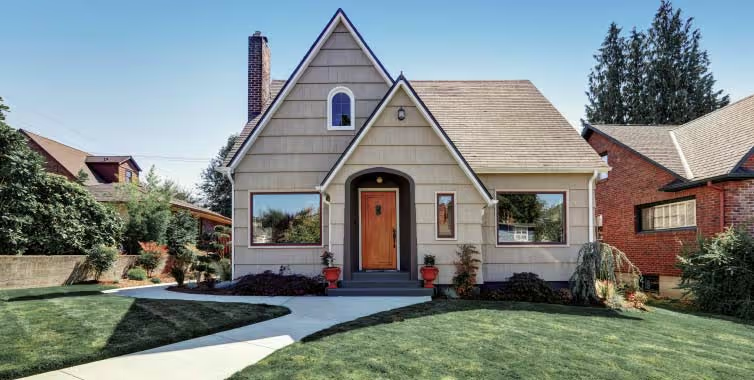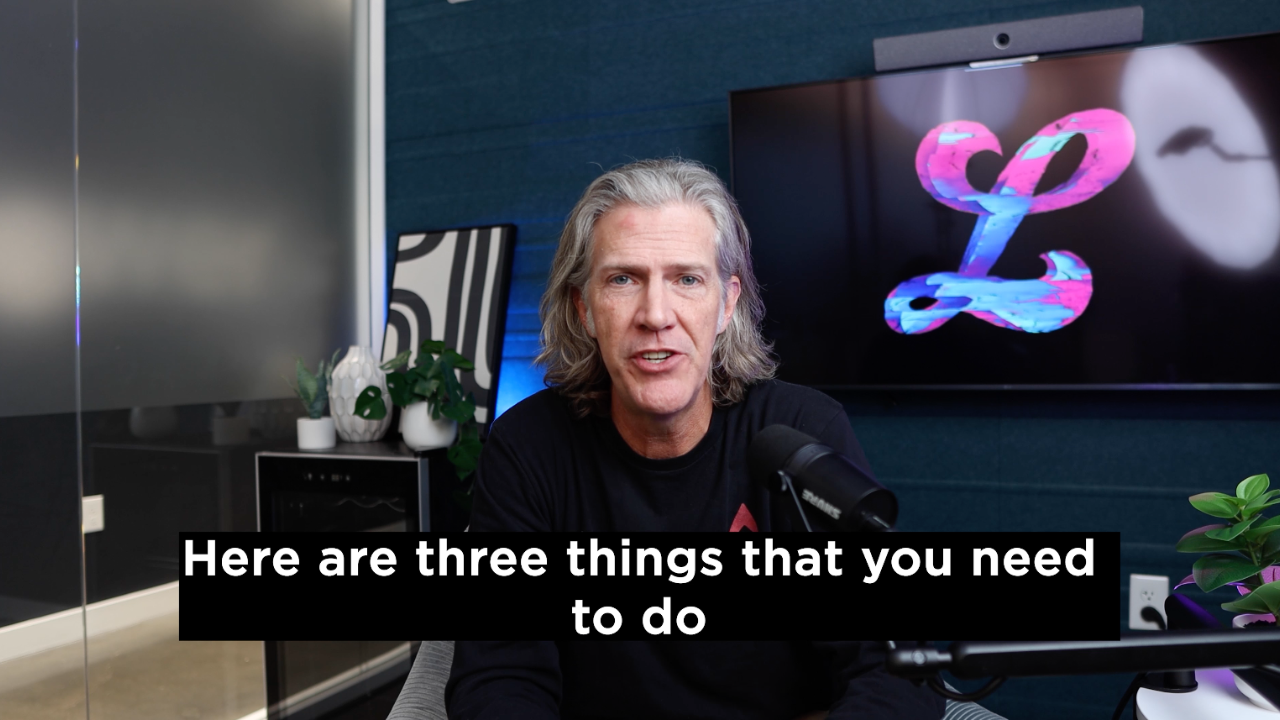First Thing's First: Are You Ready?
Becoming a homeowner is an important marker of adulthood for a lot of people, but it’s not something you should enter into lightly. Don’t start shopping for homes because your friends are buying or because someone told you renting is a waste of money. (It isn’t.)
Become a homeowner because you’re truly ready for the responsibility, both financial and otherwise.
Upfront Costs
Down payments weigh heavily on first-time homebuyers’ minds, but always know that you don’t need to put 20% down. In fact, the minimum down payment is around 3% of the sale price which, to put things in perspective, is $6,000 for a $200,000 home. Putting down more can simply get you a better interest rate.
Don’t get bogged down too much in the down payment, though. It’s not the only upfront cost of buying a home. You also have to have enough saved for:
- Closing costs, usually between 2% and 5% of the sale price
- Inspection/Appraisal fees, usually $300-$500 each and collected before closing
- Real estate taxes and homeowners insurance
- Mortgage application fees (more on those later)
- Moving costs, usually between $550 and $2,000 for a local move
Ongoing Costs
According to research from real estate resource Clever, the average American homeowner spends $13,153 on the expenses of homeownership, not including mortgage payments. Those costs include:
- Maintenance and repairs (avg. $2,676)
- Additions (avg. $6,649)
- Property taxes (avg. $2,600)
- Homeowners insurance (avg. $1,228)
A lot of people underestimate the amount of maintenance that a home requires. It’s the most common source of homebuyer’s remorse, and most people don’t keep enough in their savings to cover the maintenance that their homes need.
Before you start shopping around for your dream home, make sure your finances are stable enough to afford owning a home—not just buying one.
Become a homeowner when you’re truly ready for the responsibility, both financial and otherwise.
Mortgages: What You Need to Know
Once you know you’re ready to buy, the next step is to decide what kind of mortgage you want to apply for. (Unless, of course, you’re independently wealthy and have hundreds of thousands in the bank.)
Understanding Pre-Approval
Most real estate agents want you to get pre-approved for a mortgage before they’ll start seriously working to sell you a home. A pre-approval letter is a document that reports:
- The amount you would qualify to borrow
- The interest rate that you’d be charged
- The type of loan you would qualify for
To get pre-approved, you’ll usually need to submit documentation of your income and pre-existing debts.
As you’re shopping around for pre-approvals, consider the terms you’re offered and what impact they would have on your budget. Also consider the pre-approval amount, which is what you’d be allowed to borrow. You don’t have to borrow that entire amount.
In fact, it’s usually smarter to borrow less than your maximum approved amount. Pre-approvals don’t always incorporate the other expenses of homeownership like maintenance and property taxes. If you borrow less, you can have more available for those expenses.
Qualifying for a Mortgage
To get pre-approved—and ultimately approved—for a mortgage, you need:
A steady income.
“Steady” usually means that you’ve been receiving that income for at least two years. Salary and self-employment income count. Variable income such as one-time bonuses and occasional gig work don’t count. You’ll need to verify that income with official documentation like tax returns, pay stubs, or bank statements.
A decent credit score.
According to the credit bureau Experian, you’ll need a credit score of at least 620 to get most non-government-secured mortgages. You’ll have more choices if your credit score is higher. Some companies won’t even work with borrowers who have scores below 740.
If your credit score is lower, don’t give up. There are government programs that approve borrowers with lower scores—just ask your loan advisor.
A reasonable debt-to-income ratio.
Your debt-to-income ratio (DTI) is what you get when you divide how much you pay each month toward your debts by your monthly gross income. For example, if you have a monthly student loan payment of $1,000, a car payment of $1,500, and an income before taxes of $5,000, your DTI is 50%.
The Consumer Financial Protection Bureau reports that to get a qualified mortgage, meaning that standard protocol was followed to check that you can afford payments, you’ll need a DTI of no more than 50%. Some governments programs allow your DTI to go as high as 56% and some are more strict at 43%.
The lower your DTI is, the less of a risk you’ll pose. That often means that if you bring down your DTI by increasing your income or paying off debts, you can qualify for a lower interest rate.
A down payment.
The most important thing to know about a down payment is the more you put down, the less you’ll have to take out as a mortgage. That translates to smaller payments, and sometimes a lower interest rate.
In general, the minimum you’ll need to put down could be as low as 3% or as high as 20% depending on the type of mortgage you’re applying for. If you are not a first-time homebuyer, you are still only required to put the minimum down of 5% for most loan programs. Some mortgage types and programs even allow you to pay zero down if you qualify.
Types of Mortgages
Most mortgages fall into one of six broad categories:
Conventional
Conventional mortgages are offered directly to the borrower and not backed by a government agency. They usually require the borrower to either put down 20% (that’s $40,000 on a $200,000 home) or take out private mortgage insurance. Private mortgage insurance adds about 0.3% to 1.5% to your monthly payment. Depending on how much you put down (5%, 10% or 15%), your mortgage insurance will adjust accordingly.
Jumbo
Jumbo mortgages exceed federally set limits for conforming loans. In 2020, the limit is $510,400 in most regions and $765,600 in high-cost areas. Jumbo loans require a 20% down payment OR a specialty combo loan. (Check us out at Lower.com.) To qualify for a jumbo loan, you have to put more money down or take out a second mortgage to bring your borrowed amount under the limit.
Federal Housing Administration (FHA)
These are loans that the federal government guarantees so more borrowers can qualify for a loan. With an FHA loan, you can make a down payment as low as 3.5%, assuming your credit score is 580 or higher. If your credit score is between 500 and 579, you can still qualify, but you’ll have to put 10% or more down.
You don’t need to take out private mortgage insurance with an FHA, but you do need to pay an upfront mortgage insurance premium at closing and continue to pay a mortgage insurance premium either for 11 years or the life of the loan, depending on your lending agreement.
FHA 203(k) Renovation Loan
These loans finance the cost of a fixer-upper, plus the repairs needed. This can be a great option for first-time homebuyers when it’s more affordable to buy a home that needs work.
United States Department of Agriculture (USDA)
USDA loans help income-eligible people buy homes in qualifying rural and suburban areas. You must live in the home as your primary residence.
If you qualify, you may not need to put any money down, though you will need to pay an upfront guarantee fee and an annual fee that serves as your mortgage insurance.
Department of Veterans Affairs (VA)
If you’re an active-duty service member or a veteran of the U.S. Armed Forces—or a family member of a serviceperson—you might qualify for a VA loan. These loans may have no down payment or private mortgage insurance requirements.
Terms of the Loan
Depending on what type of loan you take out, you may need to decide how long you want to take to pay off the loan and whether you want a fixed or adjustable rate.
Loan Term
The term of your loan is how long you’ll have to pay it back. The most common mortgage terms are 15 and 30 years.
A 15-year mortgage tends to involve higher monthly payments since you’re paying the same amount back over half the time. On the other hand, because you’ll repay the entire amount sooner, you usually qualify for lower interest rates than you’d get with a longer-term loan. That means you’ll pay less over the life of the loan.
A 30-year mortgage typically has higher interest rates, which means you’ll pay more in the end, but you’ll pay less each month. How much less depends on the interest rates you qualify to get.
Interest Rates
Your mortgage will have either an adjustable or fixed interest rate.
An adjustable rate changes over time, usually following an industry-standard measure known as an index. What that means for you is that if interest rates go down overall, the interest on your loan might also go down. On the other hand, if interest rates go up, your payment might go up.
Your payment may also go up after what’s called the initial rate and payment period, also called a fixed period. It’s common for adjustable-rate mortgages to have lower interest rates in the first few months to years.
After that point, the interest rate on the loan—and thus your payment—will get adjusted at set intervals. The typical interval is a year, but some loans adjust every three or five years.
Some people choose adjustable-rate mortgages because they don’t plan to stay in the home for much longer beyond the fixed payment period. That period may last up to 10 years. Three, five, and seven-year fixed periods are also common.
With a fixed interest rate mortgage, your interest rate will be the same throughout the life of the loan. That means your payments also stay the same. There’s less uncertainty involved, so this option is a more common choice.
Before you apply for a mortgage, make sure you know the basics: down payments, interest rates, and so on.
Financing for the First-Time Homebuyer
There are federal and state programs designed specifically for people who have never owned homes before. This is the only stage in your home-buying life when you’ll qualify, so take a moment to learn what these programs have to offer.
The Fannie Mae 97 LTV
The 97 LTV, formally known as the Standard 97 Percent Loan-to-Value Mortgage, is a federal program that lets you put just 3% down on your home. It’s designed for first-time homebuyers who qualify for a conventional loan but can’t afford a larger down payment.
Borrowing with someone who’s owned a home before? Unfortunately, everyone on the loan must be a first-time homebuyer to qualify for the Fannie Mae 97 LTV.
The 97 LTV is secured by Fannie Mae, a government-sponsored organization created to make mortgages affordable to more borrowers. Formally known as the Federal National Mortgage Association (FNMA), Fannie Mae guarantees loans through the 97 LTV and other programs.
You don’t need to earn below a certain income limit to qualify for the 97 LTV, but you do need to have a credit score above 620. A higher credit score will usually decrease the fees that you’ll need to pay to Fannie Mae to participate in the program, and so will the amount of private mortgage insurance you have.
State Programs
State housing authorities also sponsor assistance programs for first-time homebuyers. Many of these programs offer down payment and closing cost assistance as well as competitive interest rates.
Some states have additional restrictions for their first-time homebuyer programs. Some offer the programs only to people in certain professions, like education or emergency response. Other programs are geared toward getting people to buy homes in certain areas.
Take a moment and find out if you might qualify for a program in your state.
This is the only stage in your home-buying life when you’ll qualify, so take a moment to learn what these programs have to offer.
Getting a Lower Rate: Tips and Tricks
The interest rate on your mortgage will affect your finances for the next 15 to 30 years of your life, so it’s worth going after a good deal. Here are some expert tricks to get you on the right track.
1. Pay Bills on Time and Avoid New Credit
A higher credit score usually means a lower interest rate, and that means you’ll pay less over the life of the loan. The best way to control your credit score is to pay all of your bills on time, pay your balances off as much as possible, and avoid applying for new loans or credit cards.
Based on national averages, a credit score between 660 and 679 means that you could potentially get a 30-year, fixed-rate mortgage at a rate of 4.76%. If you brought your score up into the 700-759 range, though, you could get an interest rate that’s 0.39 percentage points lower at 4.37%. That’s $57 less a month and $20,484 less over the life of the loan.
Want to know how much you could save by improving your credit score? Use MyFico’s Loan Savings Calculator and run the numbers.
2. Comparison Shop
Don’t just get a pre-approval and run with it, even if it’s in your price range. You’ll get different rates from different places, so shop around.
Prioritize getting pre-approval from places that won’t do a hard credit check. (We don’t do one here at Lower.com.) A hard credit check is what happens when you submit a full loan application, and it’s best to only do this once if possible. Multiple hard credit checks can bring your score down, if only temporarily.
Look for rate comparisons, too. Here at Lower, we always publish our daily interest rate (yep, you can see it right here) and compare it to average rates quoted by competitors, so you can see how we stack up.
3. Look for Transparency
The more information you can get about a particular loan, the better. If a company will offer you a low interest rate with no “ifs” or “buts,” they’ll be willing to answer any questions you can ask about that loan.
Whether or not you’ve already submitted an application or pre-application, you can get in touch with our team here at Lower—we’re happy to answer any questions you have about getting a mortgage.
4. Pay Down Your Debt
The two biggest factors that impact your rate are your credit score and your down payment—but your debt-to-income ratio (DTI) can impact your rate, too. Having a better DTI won’t impact your rate in small increments, but could qualify you for loan programs with better rates. Chat with a Lower loan advisor to see if it’s worth paying down debts to improve your DTI.
The interest rate on your mortgage will affect your finances for the next 15 to 30 years of your life, so it’s worth going after a good deal.
The Fun Part: Searching for a Home
When you’ve chosen a loan program and have your pre-approval letter in hand, you can start your home search in earnest.
1. Know Your Price Range
Your pre-approval letter will give you some information about what you can borrow, but you should have your own price range in mind for what you can afford. A good rule of thumb is that your housing costs, including property taxes and insurance, should be no more than 25% of your monthly take-home pay.
How much you pay each month will depend on factors you can’t control, like your interest rate, as well as factors you can control, like your down payment. Use a mortgage calculator to figure out how much buying a certain home would impact your monthly budget.
2. Find an Agent You Trust
When you’re a first-time homebuyer, working with an agent can make the process much less stressful, and save you money. That’s why we created Lower Real Estate—so you can get matched with a qualified professional in your area that will be a great advocate and save you money.
A great agent is:
- An expert. They can tell you a lot about the neighborhoods where you’re searching
- Experienced. They work with first-time homebuyers often
- A good fit for you. They communicate the way you want to communicate
3. Use Multiple Sources
The most popular ways of finding homes for sale are websites, used by 93% of buyers, and real estate agents, used by 86%.
You’ll have the most options and get the best deals if you combine the two techniques. Look at listings on sites like Zillow, Trulia, and Realtor.com.
Then, bring the listings you like to your agent. They have access to resources called multiple listing services, which allow real estate professionals to search for available properties based on certain criteria.
4. Consider the Neighborhood
According to a survey by the National Association of Realtors, 22% of homebuyers report compromising on a property’s condition, but just 6% compromise on the neighborhood.
Know what your neighborhood must-haves are. Should it be walkable to food and entertainment? Close to schools? Do you want quiet or busy? Know what your criteria are before you visit, but also pay attention to how it feels to be there.
A good rule of thumb is that your housing costs, including property taxes and insurance, should be no more than 25% of your monthly take-home pay.
The Takeaway
Buying your first home can be one of the most exciting moments of your life. It’s also a big deal, and it’s important to treat it like one. Crunch the numbers and figure out how much you can afford to put down. Don’t throw all your money into the down payment, though—leave some in reserve for inevitable repairs!
Keep your finances healthy so you can get a good interest rate. Get pre-approved, then find an agent so you have backup when you start visiting.
Take your time! Listen to your gut and your budget. When the perfect house comes along, you’ll know.

















.svg)

.svg)















